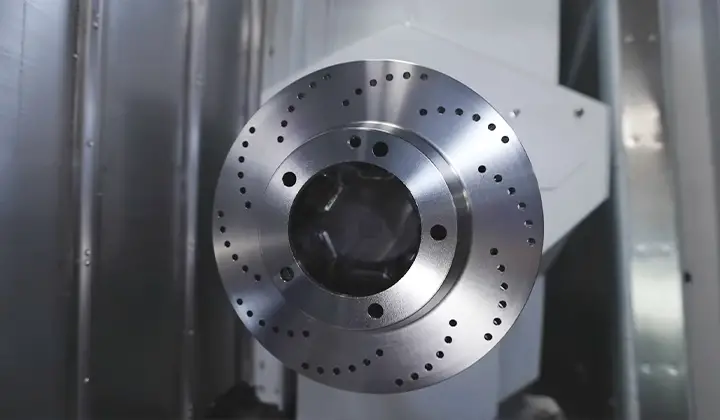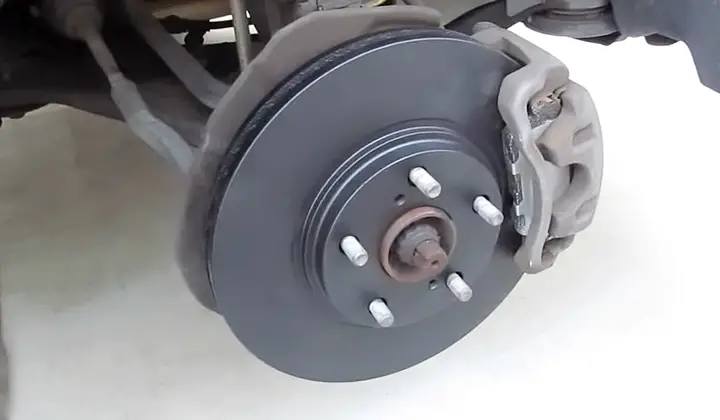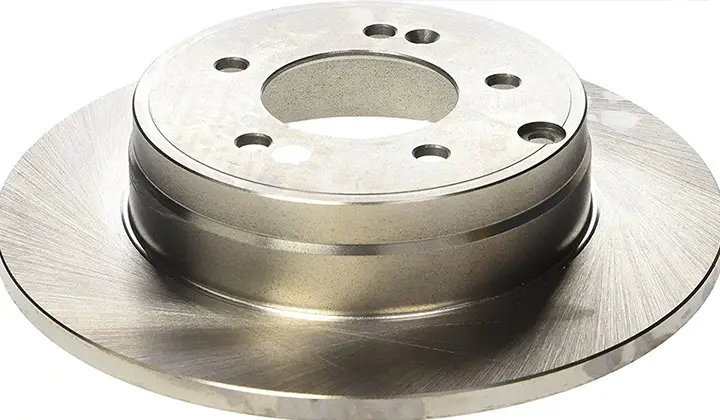The brake rotor is made up of metal, usually iron or steel, with some other metal alloys mixed in for added strength. The metals that make up the brake rotor are chosen for their ability to withstand high temperatures without warping or losing their shape.
Brake rotors are a vital part of the braking system, and they help to slow your car down by converting kinetic energy into heat.
The composition of the metal used in the brake rotor varies depending on a variety of factors such as vehicle type, driving habits, and location. In some cases, brake rotors are made of multiple pieces and can be made out of different materials.
Contents
What Are Brake Rotors Made Of – The Top 6 Brake Rotor Materials
Brake rotors are made of metal to help them withstand heavy braking and stop a vehicle. The brake rotor is a metal disc with a hole in the middle that is attached to the wheel hub. It is located between the brake pads and it works with them when you press on your brakes.
The brake pads slow down or stop the rotation of your wheels, which causes you to stop. Brake rotors are a vital part of your brake system and they have to be replaced when they wear out.
There are different materials for brake rotors, each with its own pros and cons. Here is a list of the materials that you can choose from:
Cast Iron Brake Rotors
Cast iron is a good material for brake rotors because it has a high melting point, which allows it to withstand extreme heat without changing its shape, size, or hardness.

They do the job well and are a perfect choice if you want a more reliable brake rotor. Cast iron brake rotors are used in most cars and trucks today.
High Carbon Brake Rotors
Brake rotors are also made of a type of steel called high carbon steel. This type of steel has a higher amount of carbon in it than other types of steel, which makes it stronger and more durable. Carbon is found in all types of steel but the level varies depending on the grade.

High carbon brake rotors are used to slow the rotation of the wheel so that it can stop. Brake rotors have a high carbon content which makes them hard and durable, but also very heavy.
Steel Brake Rotors
Steel is a strong material that is durable and can withstand high temperatures without deforming or warping. Steel brake rotors can be found in a variety of shapes, sizes, weights, and styles.

Steel brake rotors have been around for more than 100 years, but have evolved over time to be more effective, lighter in weight, and more durable. The main difference between steel brake rotors and cast-iron brake rotors is that they are made from steel instead of cast iron.
Steel is typically lighter in weight than cast iron which means that it can create less wear on the wheel bearings as well as reduce unsprung weight (the weight of components not supported by suspension springs). Steel also has a higher tensile strength than aluminum.
Layered Steel Brake Rotors
Layered steel brake rotors are made up of steel which is layered together to create a stronger material that can withstand extreme heat and pressure without warping or cracking like other materials might do.
Layered steel brake rotors are inexpensive but heavy and prone so it is another good choice for those who are looking for a comparatively cheaper option.
Scientists are now starting to use them on sports cars. After all, most automobile manufacturers want to use them in consumer vehicles
Aluminum Brake Rotors
Aluminum is a metal that has been used for many years in vehicle brake rotors and is still being used today.
The reasons for this are its high corrosion resistance, lightweight, and low cost. Aluminum brake rotors are a feature that can help drivers avoid expensive repairs.
They are made of a lightweight, durable material that is not susceptible to rust or corrosion.
Composite Ceramic Brake Rotors
Composite ceramic brake rotors are a type of brake rotor that uses ceramic material instead of metal to create a more durable, lighter, and faster-cooling brake rotor.
Composite ceramic brake rotors also have better resistance to corrosion than steel or cast iron brake rotors.
Ceramic brake rotors can be used on cars with high-performance engines because they can withstand higher temperatures without warping or cracking.
This type of rotor is also ideal for vehicles that use low sulfur fuel because it does not need to be replaced as often as other types.
How Do Brake Rotors Work?
Brake rotors are one of the most important components of your vehicle’s braking system. They are the metal discs that sit on the wheels, and when you press on the brake pedal, they slow down or stop turning.
The brake rotor is connected to a wheel hub by a simple ball joint which allows it to pivot in all directions. Brakes work by slowing down or stopping rotation in order to reduce speed. The brake rotor is responsible for converting this kinetic energy into heat through friction, which slows down and eventually stops rotation.
Brakes work by slowing down or stopping rotation in order to reduce speed. The brake rotor is responsible for converting this kinetic energy into heat through friction, which slows down and eventually stops rotation.
FAQs
Are Brake Rotors High Carbon Steel?
Brake rotors can be made of high carbon steel. They are a type of iron that is very high in carbon content.
Can You Make a Knife from a Brake Rotor?
It is possible to make a knife from a brake rotor, but it would be difficult and time-consuming.
What Are Car Rotors Made Of?
Car rotors are made of cast iron for durability and strength, which is why they can survive a lot of abuse.
Car rotors are typically made of cast iron. The most common material used in car rotors is cast iron, which has the highest strength-to-weight ratio.
Conclusion
Brake rotors are typically made of metal, such as iron, steel, or aluminum. Brake rotors are an important part of your vehicle’s safety.
They’re designed to work with brake pads to slow or stop the rotation of your vehicle’s wheels when you step on the brake pedal. Brake rotors have different types, which vary in their design and purpose.
These design and material choices are made to cut down on weight and make it more forgiving in high-stress situations like racing.
